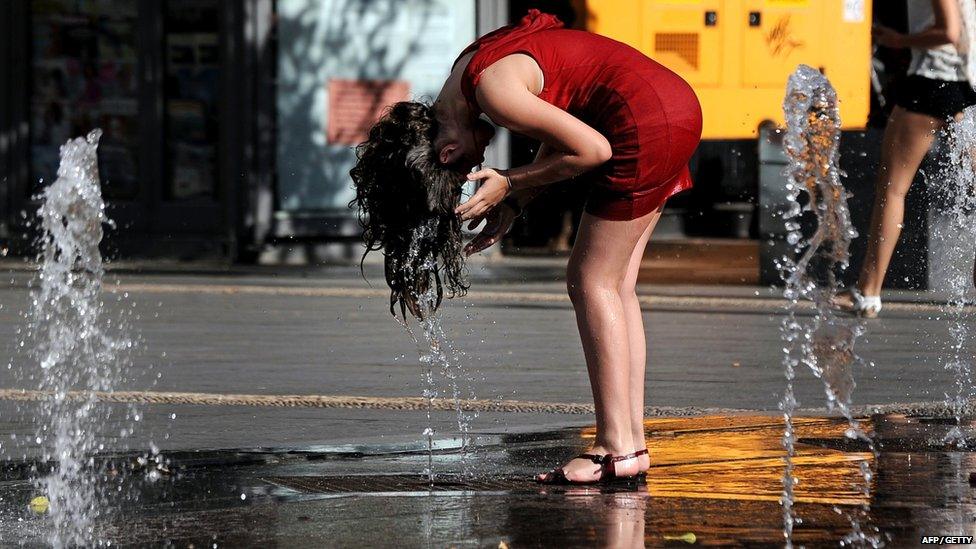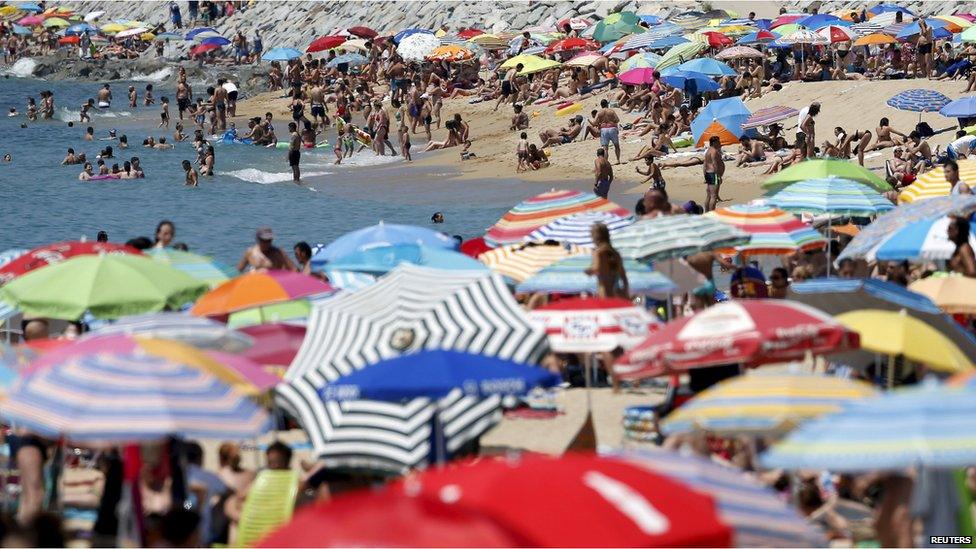Temperatures soar as heatwave hits Spain and Portugal
- Published

People have been trying to find ways to keep cool in the Spanish city of Cordoba, as temperatures reached up to 44C in some areas
A heatwave in Spain and Portugal has triggered alerts across the region, with temperatures soaring above 40C and warnings of risks to residents' health.
Warnings have been issued in more than 40 provinces in Spain, with a red alert for the southern city of Cordoba.
Neighbouring Portugal has also placed four regions on an orange alert, the second highest level possible.
Both countries have warned that the searing heat will substantially increase the risk of forest fires.
Nearly all of Spain faced an "extreme" or high risk of forest fires on Monday.
"These are not usual meteorological phenomena," said a spokesperson of the country's national weather office, as quoted by the AFP news agency.

Spanish authorities have been urging people to stay indoors during the hottest hours of the day
They warned that the exceptional temperatures posed "a very high level of risk for the population".
The Spanish cities of Cordoba, Seville and Toledo were some of the worst affected on Monday. Temperatures were expected to reach up to 44C in some areas.
In Seville, some people jumped off bridge to swim in the city's Guadalquivir river to try and escape the heat, according to AFP.
Spain's Guardia Civil urged people, external to drink at least three litres (five pints) of water a day and to avoid eating hot meals.

The heatwave has coincided with the beginning of the peak tourist season
The heatwave is expected to spread, prompting concern in France and in the UK.
In 2003, a heatwave led to 70,000 more deaths than usual across Europe.
"I don't think this heatwave will have the same consequences as the one in 2003 because we weren't as prepared at that time," said French Ecology Minister Segolene Royal.
The high temperatures are expected to last at least until the end of the week.

How the body copes with extreme heat
The body's normal core temperature is 37-38C.
If it heats up to 39-40C, the brain tells the muscles to slow down and fatigue sets in. At 40-41C heat exhaustion is likely - and above 41C the body starts to shut down.
Chemical processes start to be affected, the cells inside the body deteriorate and there is a risk of multiple organ failure.
The body cannot even sweat at this point because blood flow to the skin stops, making it feel cold and clammy.
Heatstroke - which can occur at any temperature over 40C - requires professional medical help and if not treated immediately, chances of survival can be slim.
There are a number of things people can do to help themselves. These include:
drinking fluids
wearing damp clothes which will help lower the body's temperature
sticking one's hands in cold water
placing fans next to windows as this will draw air from outside, which should be cooler
wearing looser clothes
having a lukewarm shower rather than a cold one
fanning the face rather than other parts of the body

- Published12 July 2013

- Published18 July 2013
